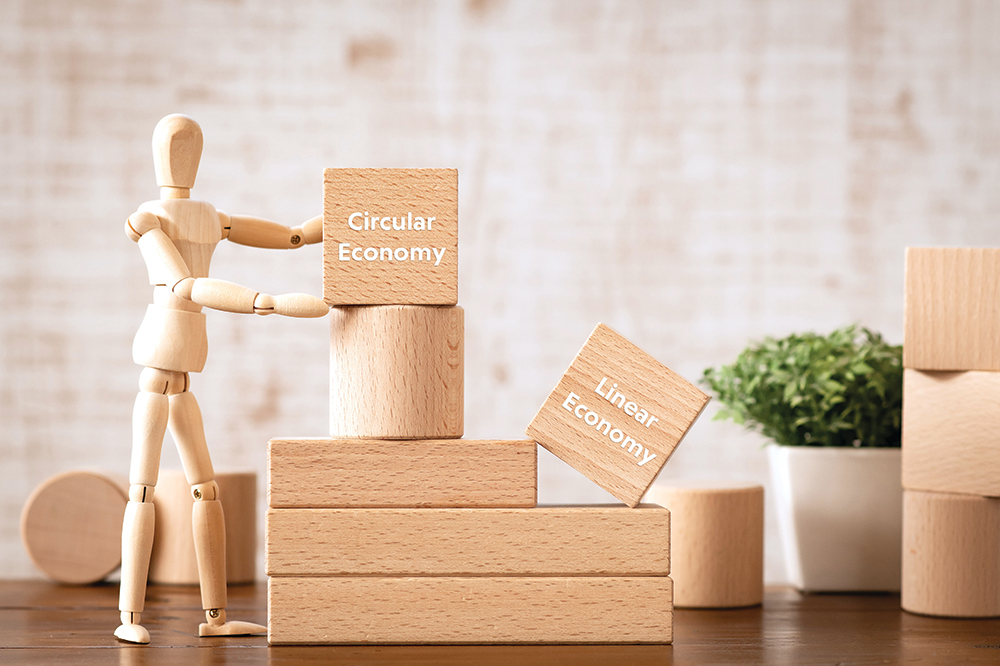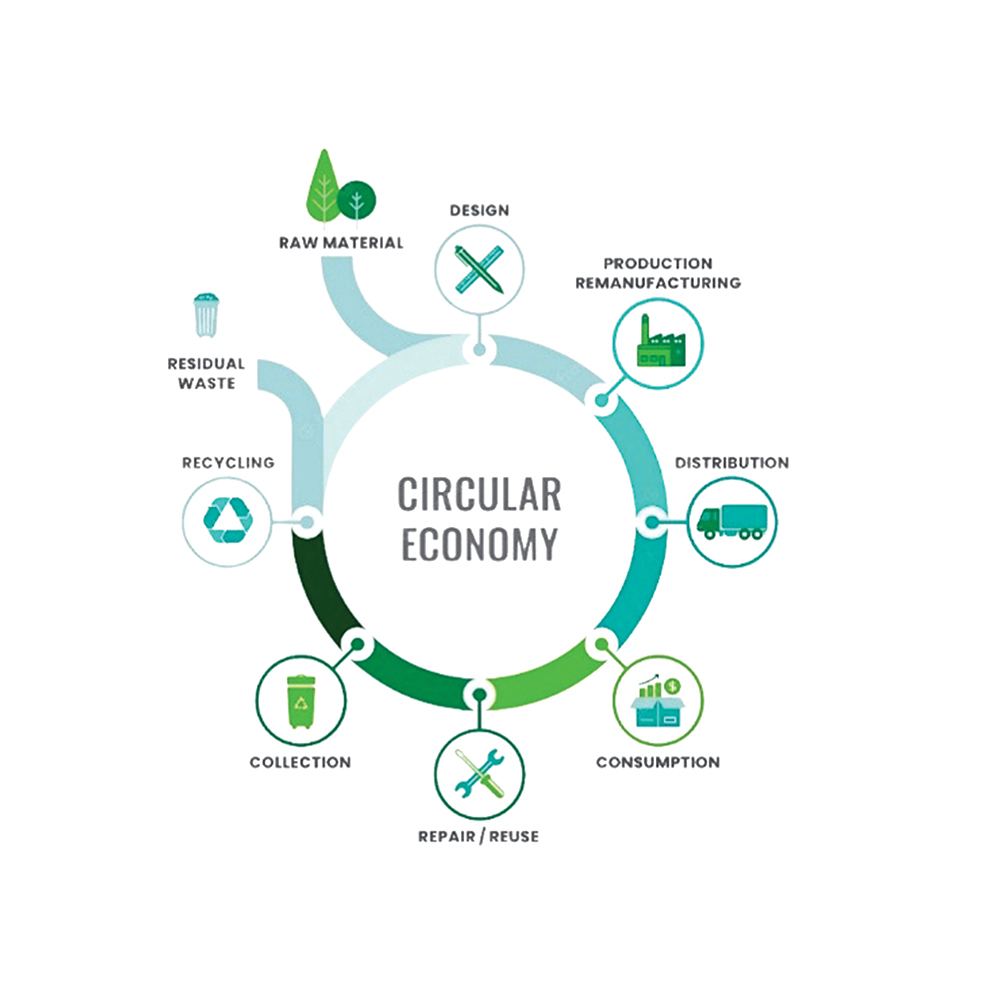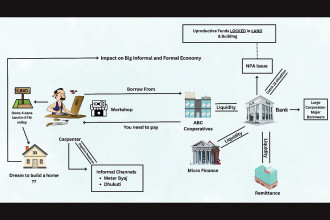
Solid Waste Management (SWM) is a crucial issue affecting sustainable development, and ecological, economic and societal sustainability. It impacts livelihood, sanitation, public health, ecosystems, job access and sustainable use of natural resources. The Government of Nepal has prioritised SWM to ensure its impact on societal well-being. But due to insufficient knowledge, lack of funding and shortage of skilled labour, it remains a socially complex and technically difficult undertaking.
In Nepal’s current federal structure, there are 293 urban centres comprising six metropolitan cities, 11 sub-metropolitan cities and 276 municipalities. The landfill capacity across these urban centres varies significantly, with an average capacity of 29,877 m3. Notably, metropolitan cities have the highest capacity at 115,000 m3, followed by sub-metropolitan cities at 68,293 m3, and municipalities at 22,516 m3. Despite these capacities, Nepal generates approximately one million tonnes of waste annually, far exceeding landfill capacities. This means that, based on current rates, landfill space would be exhausted within 9.09 years, a threshold already surpassed. For example, Kathmandu and Lalitpur rely on the Sisdol landfill for waste disposal. Originally projected to reach capacity in 2008, the landfill continues to operate due to the absence of viable alternatives.
Waste management has been a challenge globally and it isn’t new to Nepal where waste has become part of our living environment. Nepal follows the linear economic model where only 4.1% of the total waste collected is recycled, and the remaining ends up in the dumping site.
Nepal should adopt the concept of circular economy which shifts from the existing linear model of ‘take-make-dispose’ to a chain or circular form. In a circular economy, any material produced is taken to another production cycle – biological or technological. The ‘end of life’ concept is replaced with restoration, regeneration and reuse.

Source: UNDP
Lessons Nepal can learn to achieve a Circular Economy
Nepal is in the process of modernisation, which creates unprecedented pressure to balance socio-economic growth with environmental conservation. Nepal can adopt existing approaches followed by countries worldwide to establish the balance.
Incentivise Recycling, Involving Community
As per the Waste Management Baseline Survey of Nepal 2020, conducted by the Central Bureau of Statistics (CBS), only 4.1% of the total waste collected gets recycled. Recycling behaviours are essential for improving resource efficiency and reducing environmental pollution caused by waste disposal. Behavioural interventions, such as low-cost, incentives and effective nonregulatory approaches, have been widely used to promote recycling.
Waste Bank Case Study: Indonesia
The waste bank model, centred around community participation, required households to segregate recyclable waste in designated bins or bags. Once filled, residents deposited these recyclables at waste banks, receiving an account number and savings book for transactions. The waste was weighted to determine its value and funds were deposited into users’ accounts, with residents able to withdraw funds after three months.
While the waste bank model demonstrated success in diverting waste from landfills and fostering community involvement and economic independence, challenges persisted, including varying levels of success and community participation, limited impact on recycling volumes, and the need for sustained financial support and policy alignment to ensure sustainability. Despite these challenges, waste banks were officially recognised by the Indonesian government as enablers in the circular economy, with new legislation introduced to support their role in education and behaviour change.
Public Private Partnerships
Nepal is overwhelmed by the sheer amount of trash it dumps, i.e., every year over one million tonnes of solid waste is generated. The three main methods of waste handling were: piling up in landfill sites (48.6%), burning (32.1%), and piling up on the riverside (27.4%). Most of the waste flows, unmanaged, into rivers and cities with dire consequences for people and the planet. Shifting to a circular economy is widely accepted as the only long-term solution to this challenge. Private investors could address these gaps by directly providing services, investing in sustainable solid waste management businesses, or co-financing waste management projects at scale through public-private partnerships (PPPs).
PPP to Combat Waste Management: China
The Public-Private Partnerships (PPPs) in China’s municipal solid waste (MSW) treatment sector have played a crucial role in addressing the escalating waste management challenges amid rapid urbanisation and industrial development. With MSW generation surpassing that of the United States by 2004, China faced pressing issues of inadequate waste disposal and environmental contamination. Through PPPs, such as the case of the Wenzhou MSW-to-energy plant, the government collaborated with private contractors to develop innovative solutions. This initiative not only alleviated the burden on local governments but also leveraged private sector expertise and investment to improve MSW treatment infrastructure. By adopting models like Build-Operate-Transfer (BOT), these partnerships have facilitated the construction and operation of incineration plants, leading to the conversion of waste into energy.
More Than Recycling
MSW possesses great potential for energy as well as material recovery. As per the Journal of Environmental Protection, 2.7 MW of energy theoretically can be generated from solid waste in Kathmandu Valley only. Even if only organic waste is incinerated, it will produce about 1.3 MW, which is enough to light approximately 1,000 households. It indicates that the organic portion of MSW can be utilised in making compost, electricity and biogas.
Harnessing Energy: Sharjah
With the opening of the Sharjah Waste-to-Energy Plant, Sharjah has stepped up its environmental efforts and taken a big step toward reaching its ‘zero’ waste objective. This venture, turns solid waste into energy in an effort to fight climate change and cut down on greenhouse gas emissions. Built by Bee’ah and Masdar in partnership, the Emirates Trash to Energy Company handles a sizable 300,000 tonnes of solid trash yearly, yielding 30 megawatts of electricity when operating at full capacity. The plant demonstrates Sharjah’s dedication to sustainable development by removing 150,000 tonnes of harmful carbon emissions and connecting 2,000 households to the Sharjah Electricity, Water and Gas Authority’s network.
Way Forward
As Nepal charts its course toward a circular economy, we find ourselves at a crucial juncture, where every individual’s actions shape the trajectory of a sustainable future. The transition towards circularity not only addresses pressing challenges but also promises significant economic, environmental and social benefits through sustainable production and consumption patterns. This journey demands a multifaceted approach, requiring strong commitment from the public sector, active participation from the private sector, and engagement from civil society.
To drive this transformative agenda, the government must take the lead, setting the stage with policies and incentives that incentivise businesses to embrace circular business models. However, the path to circularity is not one-size-fits-all; it requires nuanced strategies tailored to Nepal’s unique context. Factors such as industrialisation levels, technological readiness, human resource capacity and access to finance will influence the pace and nature of our transition.





-1758271497.jpg)
